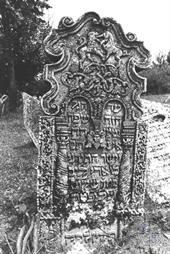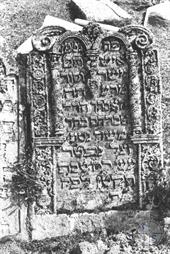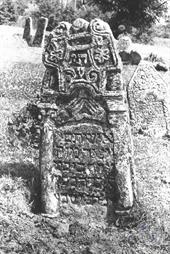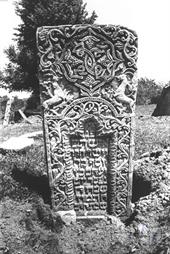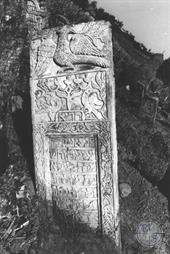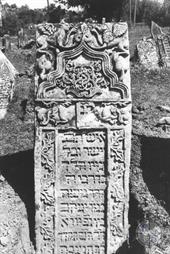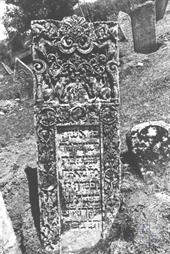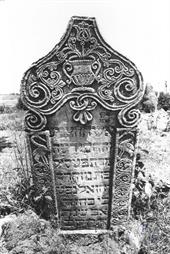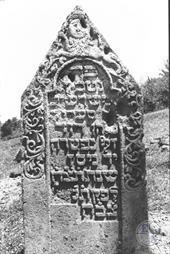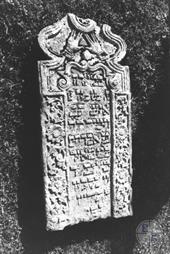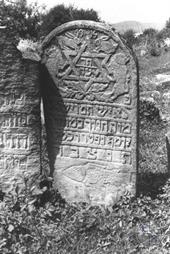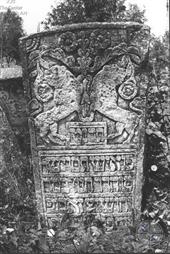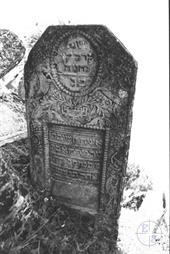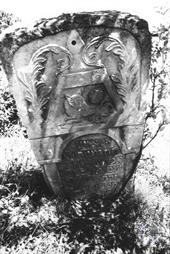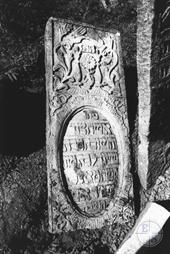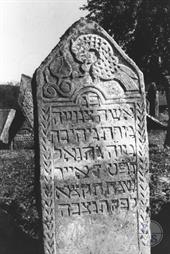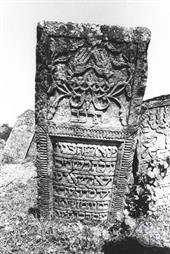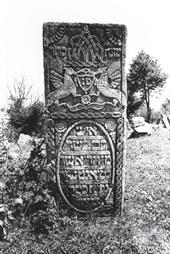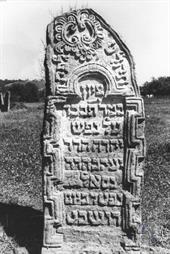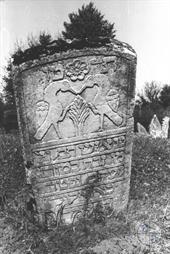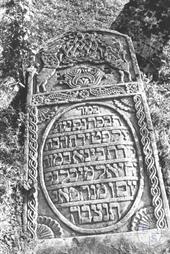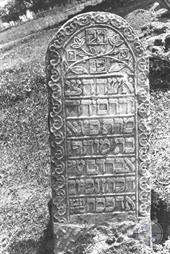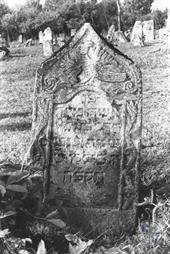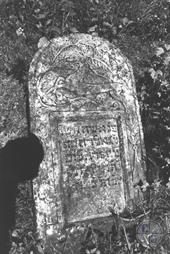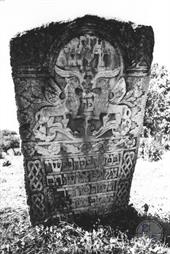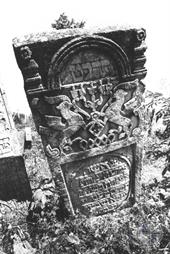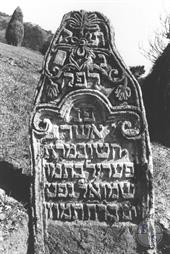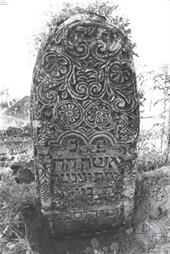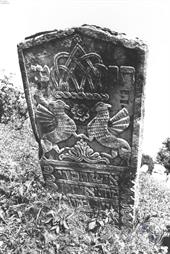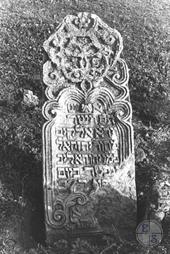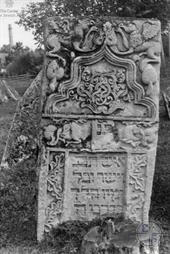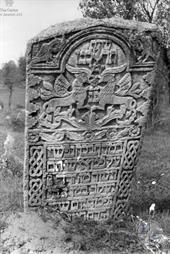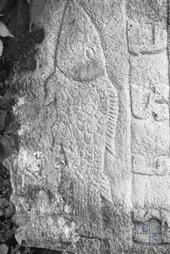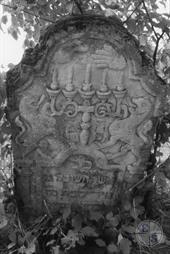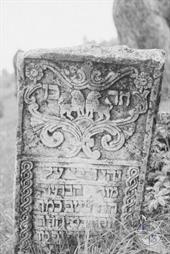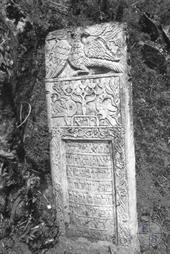Yabluniv
Kosiv district, Ivano-Frankivsk region
Year - Total Population - Jews
1880 - 1,629 - 924
1900 - 1,861 - 1,105
1921 - 1,789 - 834
1880 - 1,629 - 924
1900 - 1,861 - 1,105
1921 - 1,789 - 834
Sources:
- Pinkas Hakehillot Polin: Encyclopedia of Jewish Communities, Poland, Volume II, page 278-279, published by Yad Vashem, Jerusalem. Translated by Lancy Spalter, JewishGen, Inc.
Photo:
- A.Breier, M.Eisler, M.Grunwald. Holzsynagogen in Poland. Wien,1934
- Michael Kheifetz, Boris Khaimovich: Center for Jewish art. Jewish cemetery in Yabluniv
- Pinkas Hakehillot Polin: Encyclopedia of Jewish Communities, Poland, Volume II, page 278-279, published by Yad Vashem, Jerusalem. Translated by Lancy Spalter, JewishGen, Inc.
Photo:
- A.Breier, M.Eisler, M.Grunwald. Holzsynagogen in Poland. Wien,1934
- Michael Kheifetz, Boris Khaimovich: Center for Jewish art. Jewish cemetery in Yabluniv
Jablonow (ukr. Yabluniv, Яблунів) - urban settlement about 17 km from Kolomyya; developed only during the second half of the 18th Century, and especially during the 19th Century. Its large estate – Forest Gun [?] – belonged to the Archbishop of Lvov. The town was not connected to the railway line. In 1914-1915 the Russian Army conquered it; on their retreat, many of its houses were burnt.
There is evidence of the Jewish population in the 18th Century in the list of taxpayers. As from 1717 the Jews of Jablonow were demanded to pay 266 gold pieces. In 1785 or 1786 a Jewish school was established in Jablonow by H. Humberg; there is no information as to how long it lasted.
During the 19th Century the Jewish community of Jablonow grew, and it reached its highest number during the 1890's. From that point it started to dwindle as a result of migration to the larger cities and to overseas countries. This process intensified during WWI because of injuries inflicted on the Jews during the Russian conquest. In 1927 a fire left twelve Jewish families homeless. The first Jewish settlers of Jablonow made a living from tenancy, liquor, small trade and crafts. Until WWI the Jews owned about a dozen taverns in the area. After the war only two were left.
In the 19th and early 20th Centuries the Jewish trade flourished; however, in the inter-war period there was a constant decrease both because of the general impoverishment of the population and because the Jewish merchants and peddlers could not compete with the Ukrainian cooperatives. In 1936 there were 70 shops in the town, 68 in the hands of Jews; the rest – 2 Ukrainian cooperatives – deprived the Jewish businesses. The monthly income of the Jewish merchants was then 50-100 zloty – not enough to sustain a family. Therefore, some of them engaged in handcrafts, mainly in the manufacture of rugs. Only Jews dealt in countryside peddling, especially in the purchase of milk and eggs, which yielded a daily income of 2-3 zloty.
All tailors were Jewish, also during the inter-war period, but their living was meager; the price of a tailored suit was 10-12 zloty. Shoemakers – 12 in total – were mostly patchmakers and were considered the poorest; only one shoemaker had a sewing machine. Up until the slaughter edict of 1937, there were 4-5 Jewish butchers who sold kosher meat to Jews and innards to gentiles. After the edict, the authorities allowed only 2 Jewish butcher shops.
Most Jewish craftsmen, a total of 60, dealt during the inter-war period in the home manufacture of rugs following a mountaineers' popular pattern. The tradesmen supplied the materials and also marketed the finished product. The Jewish craftsman, in fact the Jewish laborer, received one zloty per workday that stretched out from sunrise to sunset.
Professionals in Jablonow during the inter-war period were 4 lawyers, one physician, one dentist, one judge, one paralegal clerk (the latter two, apparently reminders of the Austrian era), and a schoolteacher (seemingly a teacher of Mosaic religion to Jewish children who attended public school).
In an attempt to relieve the hardship of the Jews of Jablonow and to provide sustenance to single women, the Viennese Hilfsverein and the Baron de Hirsch Foundation came to Jablonow in 1902 to organize a school and workshop for the manufacture of hair nets and wigs. The extent of this enterprise and its lifespan are unknown.
The Gemilut Hassadim (Benefactory) Fund, founded in 1929, extended significant aid in the form of low-cost credit to Jewish merchants and craftsmen. During its peak year, 1934-1935, it granted 92 loans for a total of 7,260 zloty. In 1936-1937 loans were granted to 30 craftsmen, 25 small tradesmen, 4 laborers, 5 farmers and 10 others.
There is evidence of the Jewish population in the 18th Century in the list of taxpayers. As from 1717 the Jews of Jablonow were demanded to pay 266 gold pieces. In 1785 or 1786 a Jewish school was established in Jablonow by H. Humberg; there is no information as to how long it lasted.
During the 19th Century the Jewish community of Jablonow grew, and it reached its highest number during the 1890's. From that point it started to dwindle as a result of migration to the larger cities and to overseas countries. This process intensified during WWI because of injuries inflicted on the Jews during the Russian conquest. In 1927 a fire left twelve Jewish families homeless. The first Jewish settlers of Jablonow made a living from tenancy, liquor, small trade and crafts. Until WWI the Jews owned about a dozen taverns in the area. After the war only two were left.
In the 19th and early 20th Centuries the Jewish trade flourished; however, in the inter-war period there was a constant decrease both because of the general impoverishment of the population and because the Jewish merchants and peddlers could not compete with the Ukrainian cooperatives. In 1936 there were 70 shops in the town, 68 in the hands of Jews; the rest – 2 Ukrainian cooperatives – deprived the Jewish businesses. The monthly income of the Jewish merchants was then 50-100 zloty – not enough to sustain a family. Therefore, some of them engaged in handcrafts, mainly in the manufacture of rugs. Only Jews dealt in countryside peddling, especially in the purchase of milk and eggs, which yielded a daily income of 2-3 zloty.
All tailors were Jewish, also during the inter-war period, but their living was meager; the price of a tailored suit was 10-12 zloty. Shoemakers – 12 in total – were mostly patchmakers and were considered the poorest; only one shoemaker had a sewing machine. Up until the slaughter edict of 1937, there were 4-5 Jewish butchers who sold kosher meat to Jews and innards to gentiles. After the edict, the authorities allowed only 2 Jewish butcher shops.
Most Jewish craftsmen, a total of 60, dealt during the inter-war period in the home manufacture of rugs following a mountaineers' popular pattern. The tradesmen supplied the materials and also marketed the finished product. The Jewish craftsman, in fact the Jewish laborer, received one zloty per workday that stretched out from sunrise to sunset.
Professionals in Jablonow during the inter-war period were 4 lawyers, one physician, one dentist, one judge, one paralegal clerk (the latter two, apparently reminders of the Austrian era), and a schoolteacher (seemingly a teacher of Mosaic religion to Jewish children who attended public school).
In an attempt to relieve the hardship of the Jews of Jablonow and to provide sustenance to single women, the Viennese Hilfsverein and the Baron de Hirsch Foundation came to Jablonow in 1902 to organize a school and workshop for the manufacture of hair nets and wigs. The extent of this enterprise and its lifespan are unknown.
The Gemilut Hassadim (Benefactory) Fund, founded in 1929, extended significant aid in the form of low-cost credit to Jewish merchants and craftsmen. During its peak year, 1934-1935, it granted 92 loans for a total of 7,260 zloty. In 1936-1937 loans were granted to 30 craftsmen, 25 small tradesmen, 4 laborers, 5 farmers and 10 others.
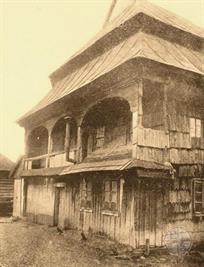 |
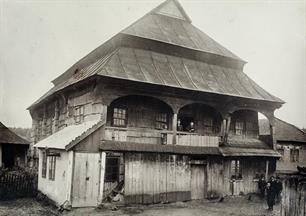 |
 |
| Sinagogue in Yabluniv, 1910-1913 | Children near the synagogue and on the gallery | The eastern facade of the synagogue |
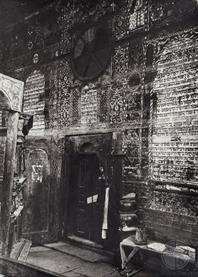 |
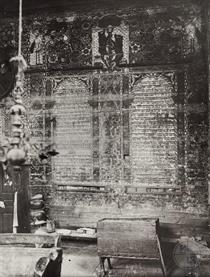 |
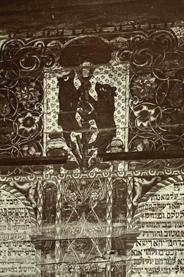 |
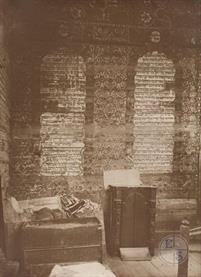 |
| Design of the western wall and exit from the prayer hall | Western wall, to the right of the exit | Bears climbing honey is a symbol of the Jewish people who reaches for the Torah |
Rabbis of the Gelernter family officiated in Jablonow for most of the 19th Century. The first was Rabbi Abraham-Yossef son of Zvi-Hirsch, previously the rabbi of Staryy Sambor, who died in Jablonow in 1840. His son, Rabbi Israel-Dov, succeeded him and later moved to officiate in Yashainitsa, where he died in 1867. Rabbi Yossef-Shmuel Gelernter, who wrote “Harei Bashamaim” and “Rosh Bashamaim”, followed him; he left to officiate in Kuty where he died in 1893. His son, Rabbi Chaim Gelernter, who succeeded him in Kuty, inherited his seat after his death.
Rabbi Chaim wrote “Pri Etz Hachaim” (Part I was published), “Simchat Hachag” and “Oneg Chaim Le-Shabbath”. On Rabbi Chaim's departure from Jablonow, Rabbi Azriel Halevi Landau was elected. He had previously officiated as rabbi of Dalatin and emigrated to Eretz Israel in 1901.
Rabbi Klonimus Kalman Zuckerman, who wrote “Minchat Hakometz”, the last of the rabbis of Jablonow, succeeded him; he was killed in the Holocaust. Side by side with the rabbis, the community of Jablonow employed teachers to its end.
A traditional leadership headed the Community's Committee during its entire existence. At the end of the 19th Century, laic representatives joined the committee. One of them, apparently a lawyer or a physician named Dr. Shitnitzky, converted afterwards. During the inter-war period the community expanded the cemetery by a half-hectare.
Zionist organizations were established in Jablonow at the end of WWI. Although the existence of a complementary Hebrew school was reported before the war, we have no information about its size and lifespan.
In 1922 there was an attempt to renew its activities, apparently without success due to financial difficulties. The most active Zionist organization among the various which rose and fell, was “Hanoar Hatzioni”; it continued its activities through the 1930's and up till WWII. The Techiyah Federation centered the cultural activities. It owned a hall, a library and sometimes held a drama circle.
We have only fragmented information as to the fate of the Jews of Jablonow during WWII. In the spring of 1942, the number of Jews grew to about 1,700. This increase resulted from either the influx of refugees from Western Poland during the Soviet rule or from the concentration of Jews from surrounding villages during the Nazi occupation.
During the first day of Pessach 5702 (April 8, 1942), the Gestapo together with the Ukranian police slaughtered the Jews of Jablonow. Some of the Jews, who foresaw the action, hid and survived. During the same month, a number of the remaining Jews were transported to the Ghetto of Kolomyya.
The final destruction of the Jewish community took place on September 8, 1942, when the last Jews were evicted to Kolomyya.
Rabbi Chaim wrote “Pri Etz Hachaim” (Part I was published), “Simchat Hachag” and “Oneg Chaim Le-Shabbath”. On Rabbi Chaim's departure from Jablonow, Rabbi Azriel Halevi Landau was elected. He had previously officiated as rabbi of Dalatin and emigrated to Eretz Israel in 1901.
Rabbi Klonimus Kalman Zuckerman, who wrote “Minchat Hakometz”, the last of the rabbis of Jablonow, succeeded him; he was killed in the Holocaust. Side by side with the rabbis, the community of Jablonow employed teachers to its end.
A traditional leadership headed the Community's Committee during its entire existence. At the end of the 19th Century, laic representatives joined the committee. One of them, apparently a lawyer or a physician named Dr. Shitnitzky, converted afterwards. During the inter-war period the community expanded the cemetery by a half-hectare.
Zionist organizations were established in Jablonow at the end of WWI. Although the existence of a complementary Hebrew school was reported before the war, we have no information about its size and lifespan.
In 1922 there was an attempt to renew its activities, apparently without success due to financial difficulties. The most active Zionist organization among the various which rose and fell, was “Hanoar Hatzioni”; it continued its activities through the 1930's and up till WWII. The Techiyah Federation centered the cultural activities. It owned a hall, a library and sometimes held a drama circle.
We have only fragmented information as to the fate of the Jews of Jablonow during WWII. In the spring of 1942, the number of Jews grew to about 1,700. This increase resulted from either the influx of refugees from Western Poland during the Soviet rule or from the concentration of Jews from surrounding villages during the Nazi occupation.
During the first day of Pessach 5702 (April 8, 1942), the Gestapo together with the Ukranian police slaughtered the Jews of Jablonow. Some of the Jews, who foresaw the action, hid and survived. During the same month, a number of the remaining Jews were transported to the Ghetto of Kolomyya.
The final destruction of the Jewish community took place on September 8, 1942, when the last Jews were evicted to Kolomyya.
Jewish cemetery in Yabluniv, 1990-1994

- Home
- Shtetls
- Vinnytsia region
- Volyn region
- Dnipro region
- Donetsk region
- Zhytomyr region
- Zakarpattia region
- Zaporizhzhia region
- Ivano-Frankivsk region
- Kyiv region
- Kropyvnytskyi region
- Luhansk region
- Lviv region
- Mykolayiv region
- Odessa region
- Poltava region
- Rivne region
- Sumy region
- Ternopil region
- Kharkiv region
- Kherson region
- Khmelnytskyi region
- Chernihiv region
- Chernivtsi region
- Cherkasy region
- Crimea
- Synagogues
- Cemeteries
- Objects & guides
- Old photos
- History
- Contact
Jewish towns of Ukraine
Jewish towns of Ukraine
My shtetl
My shtetl
Donate
